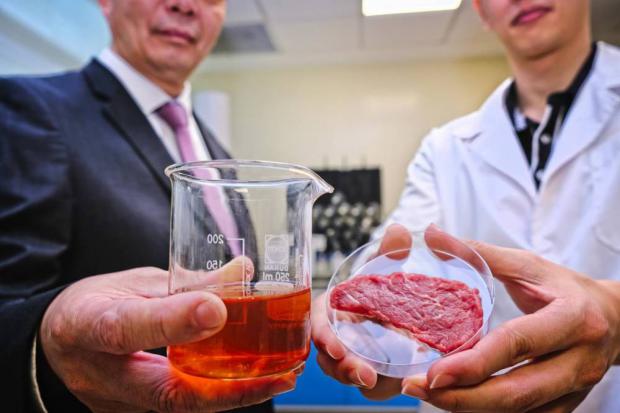
Breaking News
Catch Your Dream: Love it, Do it, Live it
 BMW to begin series production of 3rd-gen hydrogen fuel cell system
BMW to begin series production of 3rd-gen hydrogen fuel cell system
 The world you know will be nearly UNRECOGNIZABLE by 2030: AI, robots, revolts...
The world you know will be nearly UNRECOGNIZABLE by 2030: AI, robots, revolts...
Top Tech News
 Neuroscientists just found a hidden protein switch in your brain that reverses aging and memory loss
Neuroscientists just found a hidden protein switch in your brain that reverses aging and memory loss
 NVIDIA just announced the T5000 robot brain microprocessor that can power TERMINATORS
NVIDIA just announced the T5000 robot brain microprocessor that can power TERMINATORS
 Two-story family home was 3D-printed in just 18 hours
Two-story family home was 3D-printed in just 18 hours
 This Hypersonic Space Plane Will Fly From London to N.Y.C. in an Hour
This Hypersonic Space Plane Will Fly From London to N.Y.C. in an Hour
 Magnetic Fields Reshape the Movement of Sound Waves in a Stunning Discovery
Magnetic Fields Reshape the Movement of Sound Waves in a Stunning Discovery
 There are studies that have shown that there is a peptide that can completely regenerate nerves
There are studies that have shown that there is a peptide that can completely regenerate nerves
 Swedish startup unveils Starlink alternative - that Musk can't switch off
Swedish startup unveils Starlink alternative - that Musk can't switch off
 Video Games At 30,000 Feet? Starlink's Airline Rollout Is Making It Reality
Video Games At 30,000 Feet? Starlink's Airline Rollout Is Making It Reality
 Grok 4 Vending Machine Win, Stealth Grok 4 coding Leading to Possible AGI with Grok 5
Grok 4 Vending Machine Win, Stealth Grok 4 coding Leading to Possible AGI with Grok 5
Natural preservative could keep foods fresh longer than ever

Developed at Nanyang Technological University by a team led by Prof. William Chen, the preservative incorporates phytonutrients known as flavonoids. These occur naturally in almost all fruit and vegetable plants, helping defend them against threats such as pests, pathogens, and environmental stresses including the ultraviolet rays in sunlight.
While previous research indicated that flavonoids additionally showed promise as an antimicrobial agent, they would need to be processed via an expensive and non-sustainable prenylation procedure in order to bring out that quality. The scientists in Chen's team, however, claim to have developed a method of producing flavonoids that kill bacteria right from the start.
Utilizing a process similar to that used for the production of vaccines, they implanted the flavonoid-producing mechanism from plants into a species of baker's yeast called Saccharomyces cerevisiae. The yeast responded by producing ready-to-use flavonoids with high antimicrobial and antioxidant properties, both of which are essential to food preservation.
"Flavonoids extracted directly from plants need to be further processed to be antimicrobial whereas our flavonoids produced from yeast do not require this," says Chen. "Secondly, there have been no reports on antioxidant properties in flavonoids, while our yeast-based flavonoids naturally come with it."

 Arizona Goldback Timeline
Arizona Goldback Timeline HERE COMES THE MOTHERSHIP
HERE COMES THE MOTHERSHIP

